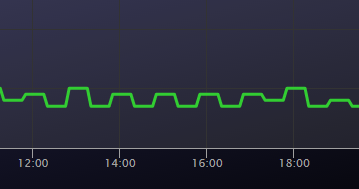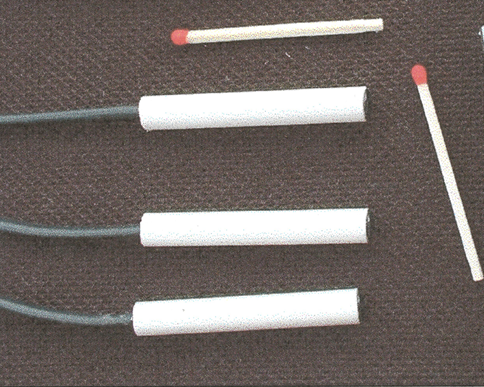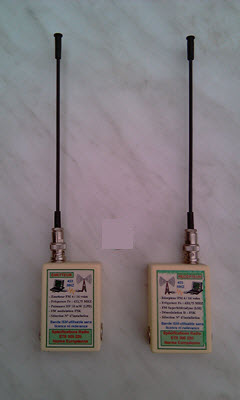Office plant monitoring
-
@mfalkvidd I was looking to your sketch and could not quite understand this piece of line
result = 1125300L / result; // Calculate Vcc (in mV); 1125300 = 1.110231000
How will this above line change if I use 4 AA battery ?.
Thanks in advance
-
If you use 4xAA and wire power to Vcc you will break the nrf and the mcu. They are not rated for that high voltage.
If you wire power to Raw you can not use readVcc, you'll have to use a voltage divider to one of the pins.
Is there a reason you want to use 4xAA?
-
If you use 4xAA and wire power to Vcc you will break the nrf and the mcu. They are not rated for that high voltage.
If you wire power to Raw you can not use readVcc, you'll have to use a voltage divider to one of the pins.
Is there a reason you want to use 4xAA?
@mfalkvidd Yes I am connecting to RAW input. My 4 battery holder for some reason does not work with 2 or 3 batteries so connecting 6V to RAW.
"...you'll have to use a voltage divider to one of the pins..." Can you elaborate this part ? Can you share a link which wherein Arduino Pro Mini is powered through RAW input and battery percentage is calculated. I very new to hardware but loving the mysensors projects. Kindly bear with my stupid questions.
Appreciate your patience..
-
@mfalkvidd Yes I am connecting to RAW input. My 4 battery holder for some reason does not work with 2 or 3 batteries so connecting 6V to RAW.
"...you'll have to use a voltage divider to one of the pins..." Can you elaborate this part ? Can you share a link which wherein Arduino Pro Mini is powered through RAW input and battery percentage is calculated. I very new to hardware but loving the mysensors projects. Kindly bear with my stupid questions.
Appreciate your patience..
-
That's correct. The Arduino cannot measure voltages above it's Vcc level.
Great that you found information on voltage dividers.
Powering on Raw will keep the voltage regulator active all the time, so you might get worse batttery life than when using 2xAA on Vcc. Therefore I suggest you order a 2xAA battery holder for later use. In the meanwhile, you can make your 4xAA holder work by putting two wires instead of batteries in the unused slots.
If you still want to use 4 batteries, http://www.mysensors.org/build/battery#measuring-and-reporting-battery-level has more details and code to use for battery measurement.
-
Just built this sensor and it is working great. However I am seeing different results with every run. It seems as if the value is always higher with one polarity than with the other one. Is this normal?

@Jan-Gatzke I have updated my skech on codebender to report rolling average. I have not tested it yet though.
The change is available at https://github.com/mfalkvidd/arduino-plantmoisture/commit/5e98c5e625075d62ae27956ab8dc3ea9dec4a29e -
@Jan-Gatzke I have updated my skech on codebender to report rolling average. I have not tested it yet though.
The change is available at https://github.com/mfalkvidd/arduino-plantmoisture/commit/5e98c5e625075d62ae27956ab8dc3ea9dec4a29e@mfalkvidd At the moment I am testing a modified version of the sketch which always does two readings. I don't think this will have a big impact on the battery life because most power is consumend by the nrf and not by the sensor. Or am I wrong? The pullups are rated at 10k Ohm. The sensors resistance will be about the same in average. So we talk about 20k at 3V which is 0.15 mA. The nrf uses abot 15 mA when sending.
-
Hi.
I have been trying to connect two sensors to the same arduino nano using this code and i have add sensor 1 pin to A0 and GND, and sensor 2 pin A1 and GND.
But i only get the reads from sensor 1 sensor 2 doesn't appear...
Can anyone help me with this on how to get more than one moisture sensor working.Thanks.
-
Hi.
I have been trying to connect two sensors to the same arduino nano using this code and i have add sensor 1 pin to A0 and GND, and sensor 2 pin A1 and GND.
But i only get the reads from sensor 1 sensor 2 doesn't appear...
Can anyone help me with this on how to get more than one moisture sensor working.Thanks.
@mrc-core there have been quite a few revisions of the sketch. The latest version (which can be found at github) only support one sensor, which is connected to A0 and A1 in the default configuration. Both pins are required to enable alternating the direction of the current when measuring, to try to minimize corrosion.
Adding support for up to three sensors is technically possible (using A0-A5), but would make the code harder to read and since I have no use for multiple sensor I haven't spent the time required to program and test a sketch with multiple sensors.
-
An update on battery life: The sensor in my bonsai tree has been reporting every 11,5 minutes since 2015-11-07, so over the last ~four months it has done 24,504 measurements. The battery level has gone from 3.187V to 3.142V, which means a drop of 0.01125V per month. Assuming I let it go down to 2.34V (limit for 8MHz according to the datasheet) and that the voltage drop is linear, I should get (3.187-2.34)/0.01125 = 75 months = ~6 years. There are several error sources in this calculation, but it looks like battery life will be quite good, even though the sensor reports much more often than necessary.

-
@mrc-core there have been quite a few revisions of the sketch. The latest version (which can be found at github) only support one sensor, which is connected to A0 and A1 in the default configuration. Both pins are required to enable alternating the direction of the current when measuring, to try to minimize corrosion.
Adding support for up to three sensors is technically possible (using A0-A5), but would make the code harder to read and since I have no use for multiple sensor I haven't spent the time required to program and test a sketch with multiple sensors.
@mfalkvidd Thanks for the replay.
Will use only one sensor per arduino.Once again thanks
-
An update on battery life: The sensor in my bonsai tree has been reporting every 11,5 minutes since 2015-11-07, so over the last ~four months it has done 24,504 measurements. The battery level has gone from 3.187V to 3.142V, which means a drop of 0.01125V per month. Assuming I let it go down to 2.34V (limit for 8MHz according to the datasheet) and that the voltage drop is linear, I should get (3.187-2.34)/0.01125 = 75 months = ~6 years. There are several error sources in this calculation, but it looks like battery life will be quite good, even though the sensor reports much more often than necessary.

@mfalkvidd since you are using 2 AA battery(3V max) with a sensor , how are you powering the sensors ? What sensors are you using ?.Most of the sensors need 5V right ? how are you providing the required voltage for sensor ?. If possible can you share a circuit diagram or close up picture for your sensor node with connection to NRF , Sensor and battery ?
Appreciate it .
-
@mfalkvidd since you are using 2 AA battery(3V max) with a sensor , how are you powering the sensors ? What sensors are you using ?.Most of the sensors need 5V right ? how are you providing the required voltage for sensor ?. If possible can you share a circuit diagram or close up picture for your sensor node with connection to NRF , Sensor and battery ?
Appreciate it .
-
@iotcrazy the fork is entirely passive so no requirements on voltage. See earlier posts in this thread for wiring information.
@mfalkvidd sorry if questions seems like a dump . What do you mean by passive ? every sensors needs some voltage to perform a task right ?
I tried connecting a DHt11 Temp and humidity sensor using a arduino pro min(with led and voltage divider removed). It is connected to 2 AA battery. Unfortunate the node sends out value(proper value) only when I power on the Mini. It never sends the data again. However if I disconnect power supply and re attach it , it again sends the data. any idea what I am doing wrong ?
Also , whats the best way to create a Node which needs to monitor a sensor which uses 5 V . Arduino Mini is 3.3 V which.
Thanks
-
Hello,
Thanks for this useful and simple project !
My first node is running perfectly since 10 days.
Next step is to create a PCB and try running on a CR2032 to minimize the size (WAF request ;))One question on the uses : when do you set a warning on the result ? When I need to water the flower ?

My first node is close to 50%, is it time ? Off course it depends on the nature of the flower but I was not able to found the information on Google ...
David.
-
yep, I think that would be a nice module!
@mfalkvidd @hek I hope to not OT :flushed: I just want to show you few old school pics, a small jump back of 20years! My dad's stuff, a real maker ;)
This one was, I guess, the smallest soil moisture, in "virtual bulb", meaning there was no external electrodes, so no corrosion :

2nd: still in virtual bulb, humidity, salinity, roots temperature, temperature compensated, pH tendancy

Multi level soil moisture:

And these old Aurel 433mhz emitter/receiver !

I have lot of others old pics like this lol! He was selling his devices.Few months ago, I have started to mix some of his old project with our new techno, but not finished! I would like to have sort of flo** pow** but more professional..still open. what!!
